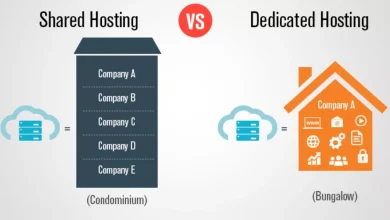Discovering the most effective marketing channels requires knowing how customers are introduced to your business. When you have that information, you can put more resources into the marketing channels that bring in the most revenue and work to improve the ones that aren’t.
Meanwhile, the first part can be difficult to ascertain with an omnichannel digital strategy: Which channel contributed most to the final sale? Before choosing to do business with you, many of your consumers may have seen your adverts on several platforms. Conversely, a multi-channel attribution model can help determine which marketing channels resulted in conversions. LinkedIn Marketing Agency can help you in B2B campaigns.
Multi-Channel Attribution: What Is It?
A marketing model that more precisely identifies which touchpoints eventually result in conversion is multi-channel attribution.
Most attribution models tend to place all the weight on a single channel, like a customer’s first or final interaction with a brand. To compensate for this, you can attribute a customer’s purchase to multiple marketing channels with multi-channel attribution.
Advantages of Using Multiple Channel Attribution
One advantage of multi-channel attribution over other attribution models is that it allows you to evaluate your marketing campaigns across several platforms. This methodology sheds light on the holistic nature of your marketing campaigns rather than focusing on conversion rates as a success metric.
Your video advertisements may not be generating conversions, but they are certainly increasing website engagement, according to a multi-channel attribution model. Using this data, you can improve your video advertising to attract viewers and boost the brand’s credibility.
You can plan marketing budgets more effectively and create more successful campaigns with the help of multi-channel attribution, which gives you clear insights into your marketing efforts.
Different Forms of Multi-Channel Attribution Models
Each of the six popular multi-channel attribution models is characterised by the relative importance it places on the many channels that make up your marketing mix.
Linear Attribution
The premise of linear attribution is that each touchpoint between your brand and a prospective customer has an identical chance of resulting in a sale. Each channel is given equal credit in this scheme. If a consumer watched five ad campaigns across different media, this model would give each one 20% of the credit.
U-Shaped Attribution
Assuming that the first and last interactions with a consumer are the most influential in directing a sale, the U-shaped attribution model comes to this conclusion. According to this concept, the initial touchpoint with a consumer would receive 40% of the credit, the last touchpoint would receive 40%, and all touchpoints in the intermediate would receive 20%.
Time Decay Attribution
According to the time decay attribution model, a customer’s last encounters with your business are the most influential in determining their purchase choice. According to this approach, a client’s most recent touchpoint with a channel would receive the most credit, while the earliest touchpoint would receive the least. If you want this strategy to work, you need to know how customers have reacted to your adverts in the past.
W-Shaped Attribution
The W-shaped attribution model distributes credit evenly among the initial point of contact, the final point of contact, and the primary activity that generates leads for your business. At the point in the customer journey when they take an active interest in your company—by subscribing to a newsletter, setting up a sales call, or ordering a brochure—you have generated a lead. The first, final, and lead-generating points receive 30% of the sale credit in this model, while the other touchpoints split the remaining 10%.
Full Path Attribution
With full route attribution, you can track a customer’s activity across all touchpoints with your business. This approach uses data to assign credit rather than guessing which steps of their journey are most important for making a sale. This concept proposes tracking KPIs throughout the client journey and awarding points accordingly.
It can take a lot of effort to perfect this procedure, but it is more resilient and accurate than other measurement methods.
Custom Attribution
You can give different marketing channels the importance they deserve with the help of the custom attribution model. This model could be suitable if you have extensive analytical data or a deep knowledge of your clients’ habits.
How to Put the Multi-Channel Attribution Model into Practice
Here are the steps to deploy the multi-channel attribution model that you’ve chosen.
Step 1: Get a Grip on How Customers Engage With Your Brand
Identifying the optimal attribution model requires a firm grasp of your target audience. Find out first how people engage with your website by tracking their actions. Track details like how people arrive at your website, the average time spent on it, the pages they view, and more. Gather information by following certain campaigns using a variety of sources.
Step 2: Gather Information
Gather and organise your data once you’ve been monitoring it for some time. Locate the points of contact where your customers are being introduced to your brand for the first time. The next step is to track conversions from lead-generating events like webinars, case studies, and content engagement. Sales pitches and demonstration signups are end-stage touchpoints that should be measured.
Step 3: Select a Model by Analysing the Data
By analysing your data, You may learn which touchpoints are most responsible for customer conversion. After seeing the results, you will be better able to distribute credit across your marketing channels.
Conclusion
Although it may seem complicated, multi-channel attribution simplifies many tasks for marketers. You can see who makes purchases, where they interact when they convert, and when your attribution model is properly configured. You can take help from LinkedIn Outreach Agency for B2B campaign.





